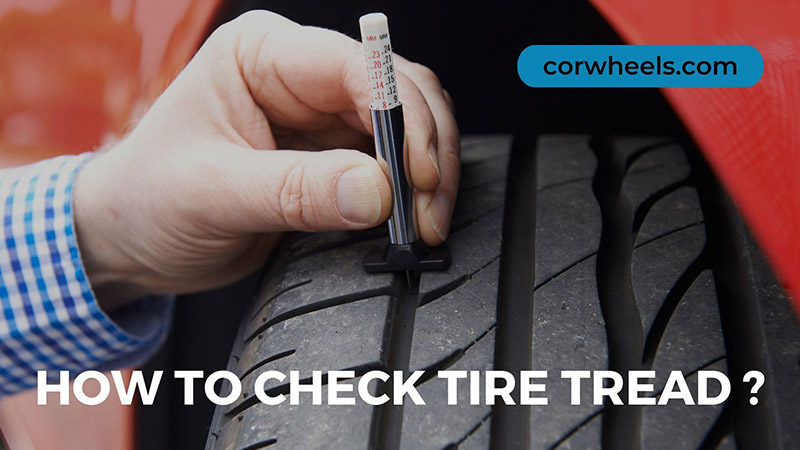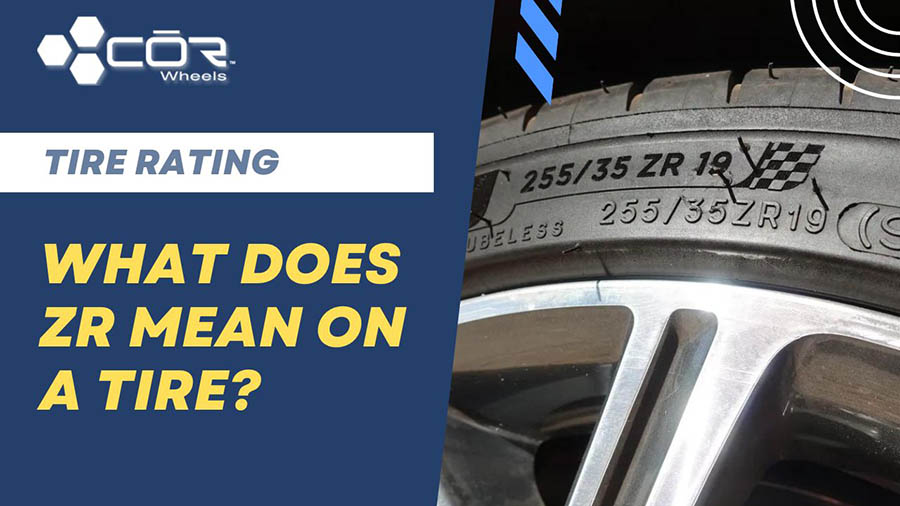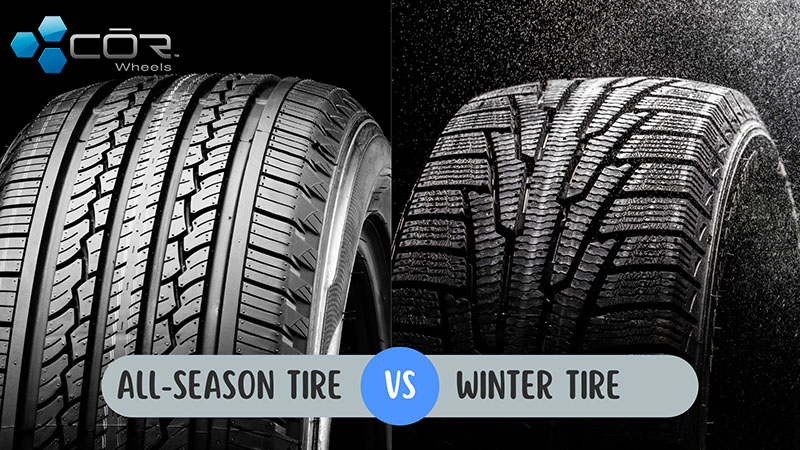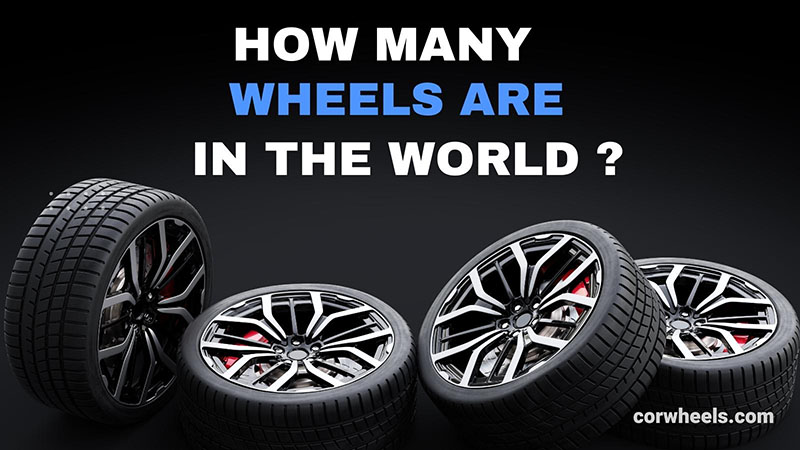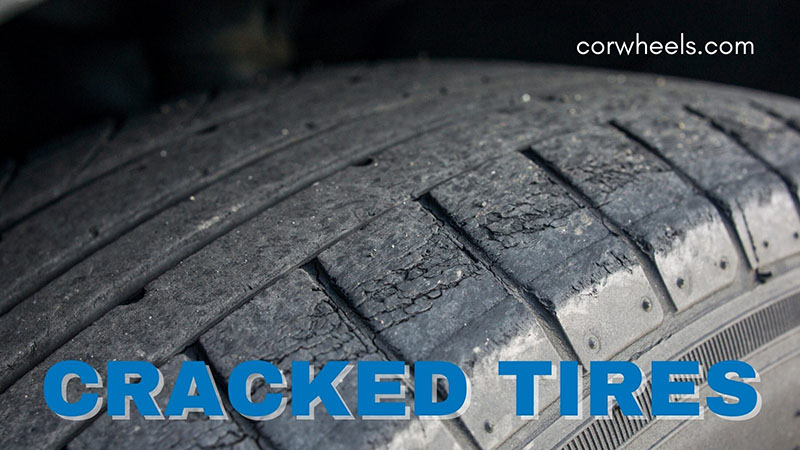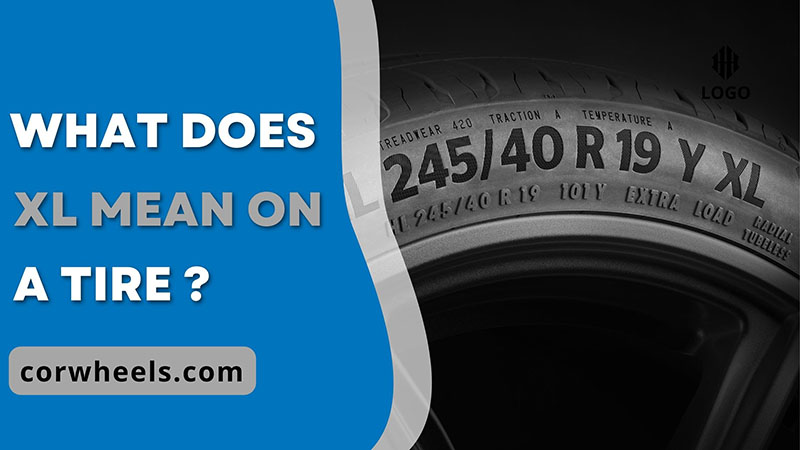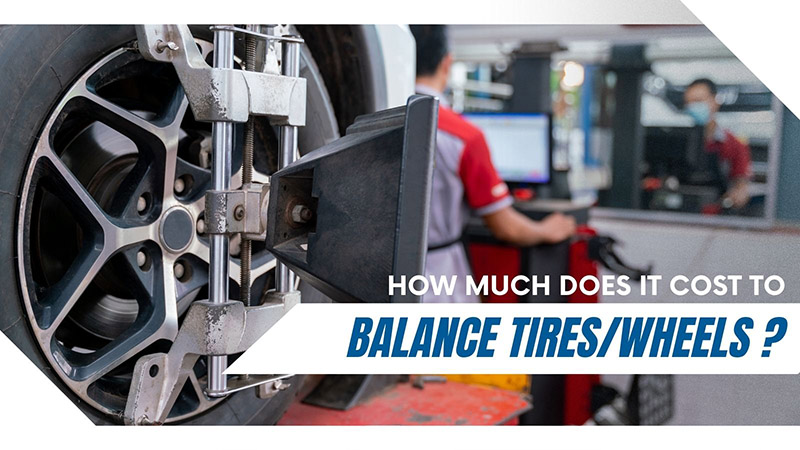Not all drivers pay attention to their tire treads; they only bring their cars to an auto shop for quick fixes when the tires are almost bald. But learning how to measure tire tread should be the first step on your journey to become a seasoned driver.
My insightful guide will dig further into this matter to lift all beginner confusion.
In this article:
How To Check Tread On Tires?
Despite some respective pros and cons for each method, the 4 measures below do serve their purposes at the end of the day. Check them out to choose which one works best for you.
Method 1. Using A Penny
Step One. Find The Tire Portions That Need A Penny Test
Before starting, check the tire’s raised rib portions that cover its entire circumference. Even someone inexperienced can easily tell which ribs suffer from shallow heights; they are critical areas that demand a penny test.
Step Two. Put The Penny Upside Down Into The Rib
Every penny is embedded with Abraham Lincoln’s face – which plays a huge part in this test. With his head facing you and pointing downwards, insert the penny upside down into the tread rib.
Step Three. Observe The Penny’s Exposed Portions
The penny does not have exact lines or marks like a typical gauge or ruler; however, the Lincoln’s head top can be a great reference point for 2/32 inches estimation.
Long story short: the gap between Lincoln’s top and the coin’s edge is around 2/32. Hence, all you need to do is to inspect whether his head is still observable once the penny is fully inserted into the ribs.
- If the head is visible: This tire has failed the test.
- If it’s still covered by the rib: Your tread is within safe territories at beyond 2/32 inches.
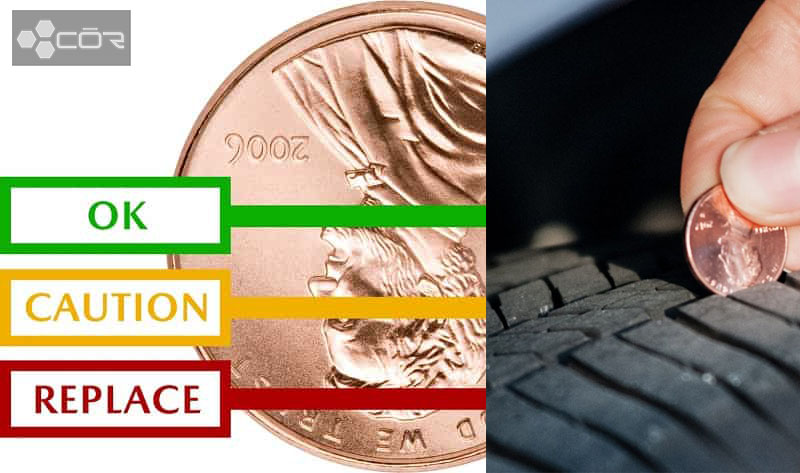
Step 4. Test Other Tires
Perform the same test on the other three remaining tires. All four tires bearing the same results means you do not have to worry about tire replacements for at least another few months.
Method 2. Using A Quarter
Step One. Put the quarter into the tire’s tread groove.
Step Two. Rotate the quarter to slot George Washington’s face further into the tread, upside down.
Step Three. Once the quarter has been inserted fully into the groove, determine whether you can see his entire head.
If his head portion is safely tread-covered, your tire still has over 4/32 inches remaining; there’s nothing to worry about.
Step Four. The above steps are repeated for other tire grooves. Any visible part of Washington’s head in the grooves signals a need for tire replacement.
Method 3. Using The Treadwear Bar
Step One. Examine the tires to identify their tread wear indicator bar (which is deeply folded into the grooves). Similar bars are littered across the grooves in numerous locations to help determine whether the treads are low.
Step Two. Check whether these wear bars stay flush against adjacent ribs. “Yes” to this question means the tire treads are at or below 2/32 inches, calling for immediate replacements.
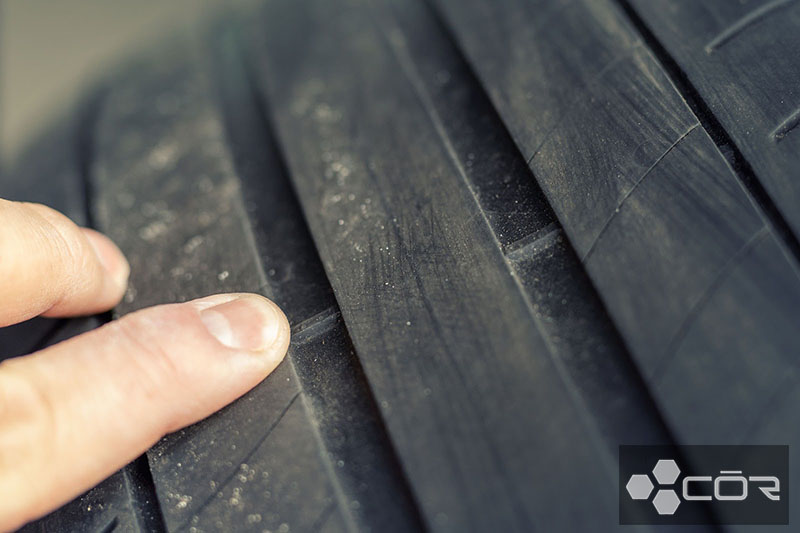
Method 4. Using Tread Depth Gauges
A bit more costly than the other three, but this is definitely the fastest and most accurate.
Step One. Purchase a tire tread depth gauge from one of the local auto stores. They usually cost about $3 to $8.
Step Two. Put the probe’s endpoint into the tire’s groove (any part is acceptable). Then, push its base down until the device’s shoulders are flat against tread blocks.
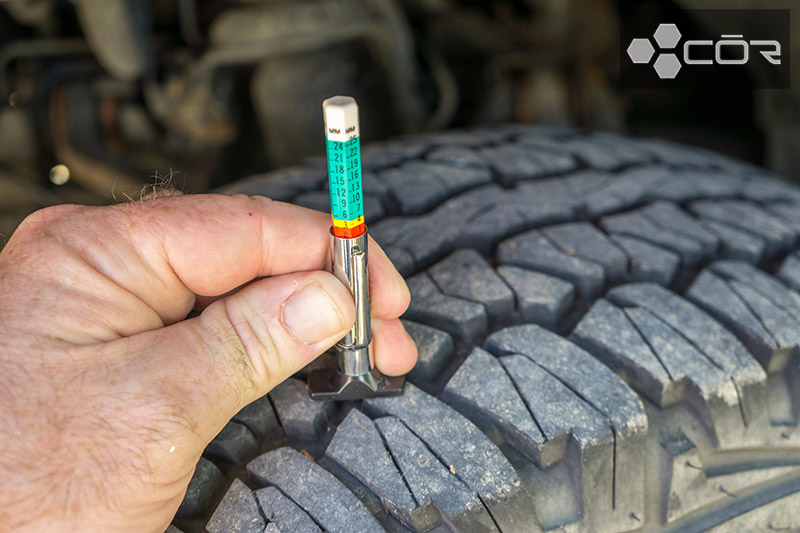
Step Three. Grab the gauge’s barrel tight before removing it from the tire grooves. During the entire process, do not to touch the probe.
Step Four. Jot down the tread’s reading; anything lower than 2/32 inches deep indicates trouble.
Step Five. Like with other methods, repeat the above steps on various tire parts to make sure.
Extra Methods: Other Coin Alternatives
Pennies and quarters are the most popular U.S. coins for tread depth inspection. But if you are from another country, the alternatives below can be used similarly:
Canadian nickel: Insert the nickel into the grooves with Queen Elizabeth facing down. If her crown is visible, your tires are below 2/32 inches and need replacing.
Canadian Toonie: Insert the toonie’s outside edge into the tire tread groove. Assess the tread levels:
- Reaching the bear paws: the tire is still as good as new
- Crossing the silver: 50% worn
- Halfway over the letters: time to shop for new tire sets.
Is It Safe to Drive On Bald Tires?
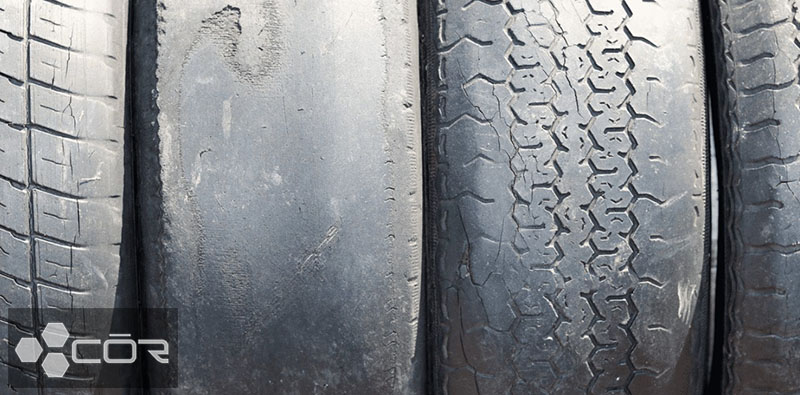
No. Driving on bald tires is among the most foolish, reckless things you could ever do.
For one, these tires are much more vulnerable to punctures. Their water-channeling capability is no longer adequate due to low tread depth, which means you easily lose vehicle control and traction in wet conditions. Accidents are only a matter of time.
Tips to Reduce Tire Wear
These old but gold tips will help you steer clear of tire damage and collisions
- Drive slowly and carefully, especially around corners or on rugged terrains
- Check tire pressure at least once per week
- Maintain rotation and alignment schedule (every 5000 to 7000 miles) to keep premature, uneven wear at bay
FAQs
Is The Penny Tire Test Truly Accurate?
Yes, its readings are mostly accurate.
Other Than Tread Wear, How Can I Know Whether My Car Needs New Tires?
Tire swaps at service centers are a must if your tires check more than one of these red-flag boxes: violent car shake, visible tire cords, cracked sidewalls, and poor traction.
Conclusion
My sharing has detailed different ways to measure tread depth and track defective tire symptoms. Choose the method that suits you best, and write to me if you still want more advice to ensure a safe road trip.

